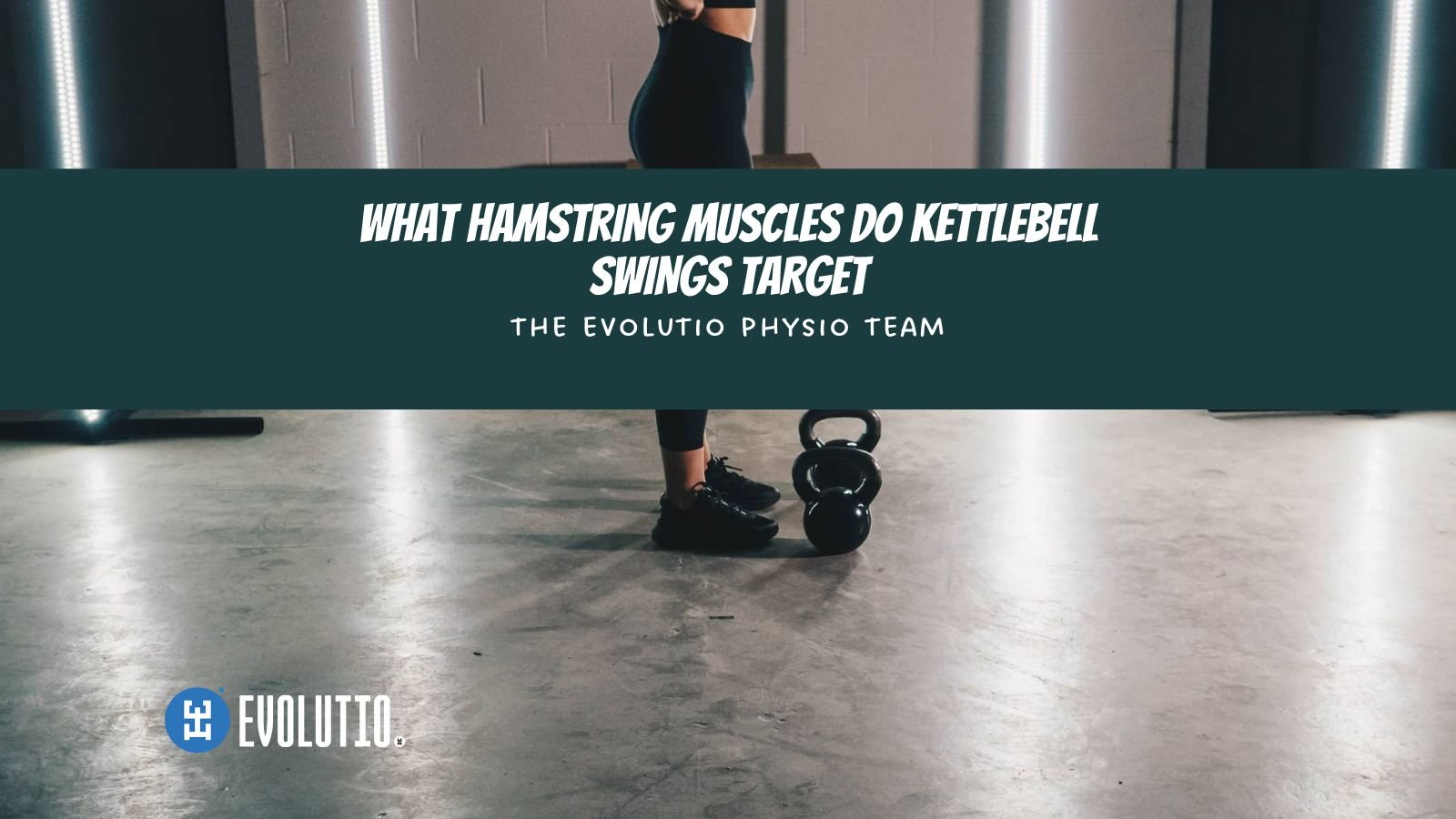
What Muscles do Kettlebell Swings use?
The kettlebell swing is a staple exercise of CrossFit training or everyday strength and conditioning work; one that places great demands on the muscles of our posterior chain.
More specifically, a study submitted through the British Journal of Sports medicine in 2013 noted that kettlebell swings use predominately hamstring muscles, however they actually target semitendinosus, the medial, inner hamstring over the lateral biceps femoris, with higher levels of Electromyographic (EMG) activity noted through the skeletal muscles.

How to Use Occlusion Bands
Aim for 60% of Max Blood Flow Occlusion
Science says all the good things seem to happen around 60% of max blood flow occlusion depending on what device you are using. This allows for just enough venous restriction with continued arterial blood flow.
With a Sports Rehab Tourniquet - pump the pressure until you can no longer feel an arterial pulse (my advice it to use medial malleolus/ inner ankle pulse). Then measure approximately 60% of that OR aim for between 130-150mmHg – for first timers start lower (thank me later).

5 Rules to Rehabilitate your Running Clients
Five years ago I was lucky enough to come across a treatment modality that just resonated with me. This particular treatment style isn’t necessarily a treatment style, rather, a framework to view, assess and understand the human body in a different way.

The Best Shoulder Strength Exercise – Bar None
COVID has brought about many travesties and hardships to us all. Times are indeed tough – we cannot visit loved ones or get outside for hours on end to enjoy the delicious Melbourne winter weather (which seems to be one of the more mild ones in memory just to rub it in our faces). Gyms are closed, and so are our favourite restaurants and bars – this has forced me into finding a different type of bar to pass the time and get me through COVID lockdown 2.0 – the kettlebell arm bar.
Poor Movement Patterns exist only in your Brain
Poor movement can exist anywhere in the body. Poor movement patterns exist only in the brain.
The Initial assumption of pain and motor control stemmed from basic inhibition (e.g. knee joint inflammation causing inhibition of the Inner Quad VMO muscle). When pain exists, you can occasionally get an increase in muscle activation (high threshold strategy) depending on the given role of the muscle (agonist or antagonist).

Your Ego is Ruining your Running
It’s my first long run after a couple weeks off and I'm struggling through the last kilometre. I spot someone up on the path ahead. It’s a man walking his dog and heading in my direction. I discreetly adjust my posture - stand tall, shoulders back, strong strides. I’m getting closer, about 10metres away. I have to time this just right. I wait until the last moment. Í take one last breath of air and then, holding my breath with the most relaxed face I can muster up, I seamlessly glide past the pair, abdominals braced, silent and effortless as if I could do this all day!

The Four Reasons all Runners Get Calf Injuries
So here’s what’s up with me. I reckon I’ve touched more calves in the last three months than in the preceding five years.
I’m not mad about it - it’s a really cool area to treat. It isn’t, however, usually among my clients’ favourite areas to get treated. If you’ve ever had a firm massage to the lower leg you’ll know what I’m talking about.

Should Eccentric Progressive overload replace all Static Stetching
The jury is still out on static stretching (except this author, who quit the jury room a while ago to go to the pub), but a lot of people are very attached to it so let’s have a look.
Muscles are elastic, so if you reach for your toes for 30 seconds, you’ll get a little bit closer to them. Yay #mobilitygainz! But tomorrow/next week/next year you’ll reach again and they’ll be just as far away… So what have you really gained?
Your muscles are changing constantly depending on what you do. So if you go “hey I need you to lengthen out just for this minute”, they will. Problems arise when you’re also telling them “hey we mostly just need to sit in this chair” or “if we quarter-rep this bench press I can get an extra plate on.”
If you spend 1% of your time passively trying to get into positions that you want, but that you don’t actively load, train or use for the other 99%, is it really worth your muscles’ time to change?

